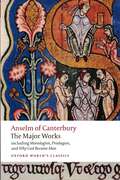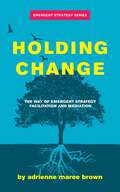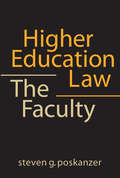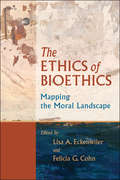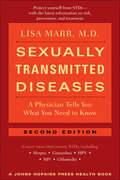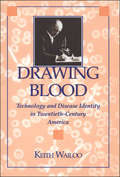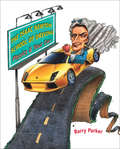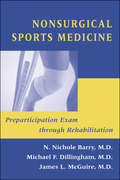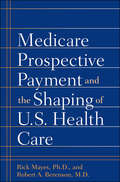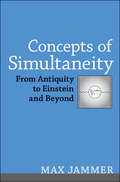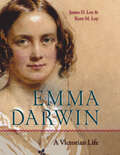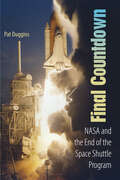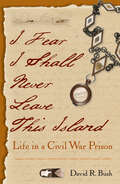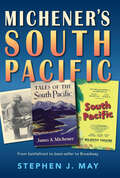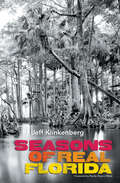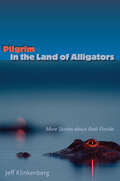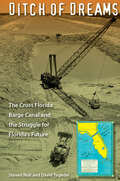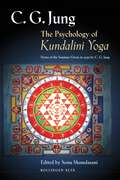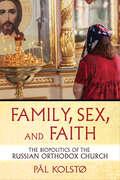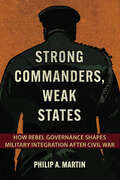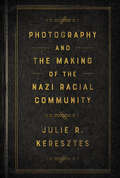- Table View
- List View
Holding Change: The Way of Emergent Strategy Facilitation and Mediation
by Adrienne Maree BrownEmergent Strategy Series No. 4
Higher Education Law: The Faculty
by Steven G. Poskanzer"Do we need to talk to our lawyers about this?" "What do the attorneys say?" "Why didn't you get the lawyers involved before now?"Just about every department chair and dean, certainly every provost and president, and an ever-increasing number of faculty find themselves asking—or being asked—such questions. Dealing with issues ranging from academic freedom to job security and faculty discipline, lawyers, legal requirements, and lawsuits has become an established part of the apparatus of American higher education. Higher Education Law was written to help faculty and administrators navigate critical legal issues and avoid potential legal pitfalls. Drawing on his experience as university counsel, administrator, and teacher at a number of institutions, Steven G. Poskanzer explains the law as it pertains to faculty activities both inside and outside the academy, including faculty roles as scholars, teachers, and members of institutional communities, as well as employees and public citizens. In each of these areas, he expands his discussion of cases and decisions to set out his own views both on the current status of the law and how it is likely to evolve.
The Ethics of Bioethics: Mapping the Moral Landscape
by Lisa A. Eckenwiler, Felicia G. CohnStem cell research. Drug company influence. Abortion. Contraception. Long-term and end-of-life care. Human participants research. Informed consent. The list of ethical issues in science, medicine, and public health is long and continually growing. These complex issues pose a daunting task for professionals in the expanding field of bioethics. But what of the practice of bioethics itself? What issues do ethicists and bioethicists confront in their efforts to facilitate sound moral reasoning and judgment in a variety of venues? Are those immersed in the field capable of making the right decisions? How and why do they face moral challenge—and even compromise—as ethicists? What values should guide them? In The Ethics of Bioethics, Lisa A. Eckenwiler and Felicia G. Cohn tackle these questions head on, bringing together notable medical ethicists and people outside the discipline to discuss common criticisms, the field's inherent tensions, and efforts to assign values and assess success. Through twenty-five lively essays examining the field's history and trends, shortcomings and strengths, and the political and policy interplay within the bioethical realm, this comprehensive book begins a much-needed critical and constructive discussion of the moral landscape of bioethics.
Cesarean Section: Understanding and Celebrating Your Baby's Birth (A Johns Hopkins Press Health Book)
by Michele C. Moore Caroline M. de CostaTrusted physicians reassure mothers and mothers-to-be: It's okay to say yes.One in four babies born in the United States and Europe comes into the world via Cesarean section. Yet this procedure has been described by critics as an unnecessary and potentially dangerous medical intervention. Consequently, expectant mothers often fear this option, and women who have had C-sections can feel a sense of failure.In Cesarean Section: Understanding and Celebrating Your Baby's Birth, Drs. Michele Moore and Caroline de Costa emphasize the joy of delivering a healthy baby, however that is best achieved. They explain why Cesarean births are sometimes preferable to vaginal delivery for both mother and baby, and they help women understand the issues behind the decision to perform the procedure. From anesthesia, surgery, and recovery through at-home care of mother and child, the authors offer reassurance and practical information for all mothers and mothers-to-be. They also discuss the latest findings on postpartum depression and planning for future births, including the possibility of vaginal birth after a Cesarean section.For every woman who has a planned—or unplanned—Cesarean section, this book provides the information they need to alleviate their fears and come to value this delivery option."Because up to a quarter of all births are Cesarean births, prenatal preparation should include information about Cesarean sections for every woman. And that is why we have written this guide. . . . We believe strongly that it is time to speak out and say that Cesarean section is a normal birth method and that women who have a Cesarean section should not be made to feel that they have failed. . . . We hope you find the information in this book useful and helpful in thinking about C-section, whether you have already had a Cesarean and want to understand the experience better, you wish to plan for another C-section birth, or you are expecting a baby and want to be informed about all the possibilities ahead, including this other normal way of bringing a baby into the world."—from the Introduction
Sexually Transmitted Diseases: A Physician Tells You What You Need to Know (A Johns Hopkins Press Health Book)
by Lisa MarrEvery year, millions of people are exposed to a sexually transmitted disease. And many people who are sexually active often worry about being infected. In her comprehensive guide to STDs, Dr. Lisa Marr tells readers everything they need to know about avoiding, preventing, and treating these diseases.Complete and up-to-date, this book describes safer sex practices, testing protocols, and symptoms, and details commonly known treatments as well as significant recent medical advances—including new testing for the herpes virus, the vaccine against the human papilloma virus (HPV), and new discoveries about the effectiveness of spermicides and condoms. For each disease, Dr. Marr offers the latest Sexually Transmitted Disease Treatment Guidelines from the Centers for Disease Control and Prevention.Forthright, compassionate, and practical, this guide is a trusted source of advice for anyone who is sexually active.
Drawing Blood: Technology and Disease Identity in Twentieth-Century America (The Henry E. Sigerist Series in the History of Medicine)
by Keith WailooHow physicians in this century wielded medical technology to define disease, carve out medical specialties, and shape political agendas.Winner of the American Public Health Association Arthur Viseltear PrizeIn Drawing Blood, medical historian Keith Wailoo uses the story of blood diseases to explain how physicians in this century wielded medical technology to define disease, carve out medical specialties, and shape political agendas. As Wailoo's account makes clear, the seemingly straightforward process of identifying disease is invariably influenced by personal, professional, and social factors—and as a result produces not only clarity and precision but also bias and outright error. Drawing Blood reveals the ways in which physicians and patients as well as the diseases themselves are simultaneously shaping and being shaped by technology, medical professionalization, and society at large. This thought-provoking cultural history of disease, medicine, and technology offers an important perspective for current discussions of HIV and AIDS, genetic blood testing, prostate-specific antigen, and other important issues in an age of technological medicine."Makes clear that the high stakes involved in medical technology are not just financial, but moral and far reaching. They have been harnessed to describe clinical phenomena and to reflect social and cultural realities that influence not only medical treatment but self-identity, power, and authority."—Susan E. Lederer, H-Net Humanities & Social Sciences On Line"Wailoo's masterful study of hematology and its disease discourse is a model of interdisciplinarity, combining cultural analysis, social history, and the history of medical ideas and technology to produce a complex narrative of disease definition, diagnosis, and treatment . . . He reminds us that medical technology is a neutral artifact of history. It can be, and has been, used to clarify and to cloud the understanding of disease, and it has the potential both to constrain and to emancipate its subjects."—Regina Morantz-Sanchez, Journal of Interdisciplinary History
The Isaac Newton School of Driving: Physics and Your Car
by Barry ParkerFor some people, driving is an art; for others, it's a science. At the Isaac Newton School of Driving, though, every car is a laboratory on wheels and every drive an exciting journey into the world of physics. As explained by renowned science writer and physics professor Barry Parker—whose father was a car mechanic and garage owner—almost every aspect of driving involves physics. A car's performance and handling relies on fundamental concepts such as force, momentum, and energy. Its ignition system depends on the principles of electricity and magnetism. Braking relies on friction—yet another basic scientific concept—and if the brakes fail, the resulting damage, too, can be predicted using physics.Parker's first lesson describes the basic physics of driving: speed and acceleration; why you get thrown forward while braking or outward while turning; and why car advertisements boast about horsepower and torque. He goes on to discuss the thermodynamics of engines, and how they can be more fuel efficient; and what friction and traction are and how they keep a car's tires on the road, whether it's dry, wet, or icy. He also describes how simple laws of physics enable scientists to design aerodynamic cars and high-tech steering systems. Parker then explores the high-performance physics of auto racing, outlines how traffic accidents are reconstructed by police, uses chaos theory to explain why traffic jams happen, and describes what cars of the future might look like. Whether you drive a Pacer or a Porsche, The Isaac Newton School of Driving offers better—and better-informed—driving through physics.
Nonsurgical Sports Medicine: Preparticipation Exam through Rehabilitation
by N. Nichole Barry Michael F. Dillingham James L. McGuireWith a growing number of people, young and old, engaged in a variety of physical activities, the field of sports medicine has gained greater importance for medical professionals. Nonsurgical Sports Medicine provides a comprehensive guide for the physician whose practice includes preparing patients to take part in sports as well as diagnosing and treating any resulting injuries. Nonsurgical Sports Medicine begins with an overview of the principles of the preparticipation medical evaluation and outlines how preexisting medical conditions may be optimally managed in the athlete. Individual chapters cover the evaluation and treatment of head and spine injuries, injuries to the upper and lower extremities, and overuse syndromes. The book also addresses such important issues as infectious diseases, ergogenic agents, the needs of older and young athletes, women in sports, and the effect of environmental conditions on athletes. Along with detailed discussions of the anatomy and physiology of the musculoskeletal system, the authors describe specific maneuvers during the physical examination which are important for evaluation and diagnosis. Nonsurgical Sports Medicine provides a broad range of information that complements a physician's general knowledge and that will be invaluable in assessing patients with sports-related injuries.
Medicare Prospective Payment and the Shaping of U.S. Health Care
by Rick Mayes Robert A. BerensonThis is the definitive work on Medicare’s prospective payment system (PPS), which had its origins in the 1972 Social Security Amendments, was first applied to hospitals in 1983, and came to fruition with the Balanced Budget Act of 1997. Here, Rick Mayes and Robert A. Berenson, M.D., explain how Medicare’s innovative payment system triggered shifts in power away from the providers (hospitals and doctors) to the payers (government insurers and employers) and how providers have responded to encroachments on their professional and financial autonomy. They conclude with a discussion of the problems with the Medicare Modernization Act of 2003 and offer prescriptions for how policy makers can use Medicare payment policy to drive improvements in the U.S. health care system.Mayes and Berenson draw from interviews with more than sixty-five major policy makers—including former Treasury secretary Robert Rubin, U.S. Representatives Pete Stark and Henry Waxman, former White House chief of staff Leon Panetta, and former administrators of the Health Care Financing Administration Gail Wilensky, Bruce Vladeck, Nancy-Ann DeParle, and Tom Scully—to explore how this payment system worked and its significant effects on the U.S. medical landscape in the past twenty years. They argue that, although managed care was an important agent of change in the 1990s, the private sector has not been the major health care innovator in the United States; rather, Medicare’s transition to PPS both initiated and repeatedly intensified the economic restructuring of the U.S. health care system.
Concepts of Simultaneity: From Antiquity to Einstein and Beyond
by Max JammerMax Jammer's Concepts of Simultaneity presents a comprehensive, accessible account of the historical development of an important and controversial concept—which played a critical role in initiating modern theoretical physics—from the days of Egyptian hieroglyphs through to Einstein's work in 1905, and beyond. Beginning with the use of the concept of simultaneity in ancient Egypt and in the Bible, the study discusses its role in Greek and medieval philosophy as well as its significance in Newtonian physics and in the ideas of Leibniz, Kant, and other classical philosophers. The central theme of Jammer's presentation is a critical analysis of the use of this concept by philosophers of science, like Poincaré, and its significant role in inaugurating modern theoretical physics in Einstein's special theory of relativity. Particular attention is paid to the philosophical problem of whether the notion of distant simultaneity presents a factual reality or only a hypothetical convention. The study concludes with an analysis of simultaneity's importance in general relativity and quantum mechanics.
Law And Poverty
by Dr S. R. MyneniThe book Law and Poverty by Dr. S. R. Myneni provides a comprehensive exploration of the intricate relationship between legal frameworks and socio-economic issues related to poverty. It examines the definitions, causes, and measurements of poverty while addressing its impact on vulnerable groups such as women, children, and marginalized communities in India. The work delves into historical and modern theories of poverty, the politics surrounding it, and the international and domestic legal instruments aimed at its alleviation. Through detailed discussions on rights such as education, work, health, and shelter, the book emphasizes the importance of law in social justice and poverty eradication. It also critiques policies and suggests reforms, making it a valuable resource for understanding poverty's multidimensional aspects and the legal system's role in addressing them.
Emma Darwin: A Victorian Life
by James D. Loy Kent M. LoyIn 1808, Josiah Wedgwood II, owner and general manager of the famous pottery and china manufactory that bore his name, welcomed an eighth child into his large, vibrant family. This daughter, Emma, had a relatively happy childhood and grew up intelligent, educated, and religious. A talented sportswoman and an accomplished pianist, she married her cousin Charles Darwin at the age of thirty, bore ten children in their forty-three years together, and patiently nursed her famous husband through mysterious and chronic illnesses.Informed by her strong Christian faith as well as her quick, inquiring mind, Emma learned to coexist with her husband's radical scientific theories, though she worried about the fate of Charles's soul. Although the high spirits of her youth were somewhat dampened by the cares of life, she managed family and household affairs--including the difficult circumstances surrounding the death of three children--with courage, gravity, and a sense of humor.In this charming volume, the wife, companion, and confidante of the father of evolution comes into full focus. Drawing upon Emma’s personal correspondence as well as the abundant literature about her husband, authors James Loy and Kent Loy reveal the fascinating story of an exceptional woman who remained true to herself despite hardship and who, in the process, humanized her work-obsessed husband and held her family together.
Final Countdown: NASA and the End of the Space Shuttle Program
by Pat DugginsThe Space Shuttle was once the cornerstone of the U.S. space program. However, each new flight brings us one step closer to the retirement of the shuttle in 2010. Final Countdown is the riveting history of NASA's Space Shuttle program, its missions, and its impending demise. It also examines the plans and early development of the space agency’s next major effort: the Orion Crew Exploration Capsule.Journalist Pat Duggins, National Public Radio's resident "space expert," chronicles the planning stages of the shuttle program in the early 1970s, the thrills of the first flight in 1981, construction of the International Space Station in the 1990s, and the decision in the early 2000s to shut it down. As a rookie reporter visiting the Kennedy Space Center hangar to view the Challenger wreckage, Duggins was in a unique position to offer a poignant eyewitness account of NASA's first shuttle disaster. In Final Countdown, he recounts the agency's struggle to rebound after the Challenger and Columbia tragedies, and explores how politics, scientific entrepreneurship, and the human drive for exploration have impacted the program in sometimes unexpected ways. Duggins has covered eighty-six shuttle missions, and his twenty-year working relationship with NASA has given him unprecedented access to personnel. Many spoke openly and frankly with him, including veteran astronaut John Young, who discusses the travails to get the shuttle program off the ground. Young's crewmate, astronaut Bob Crippen, reveals the frustration and loss he felt when his first opportunity to go into space on the first planned space station was taken away.As the shuttle program winds down, more astronauts may face similar disappointments. Final Countdown is a story of lost dreams, new hopes, and the ongoing conquest of space.
I Fear I Shall Never Leave This Island: Life in a Civil War Prison
by David R. BushJohnson's Island, in Sandusky, Ohio, was not the largest Civil War prison in the North, but it was the only one to house Confederate officers almost exclusively. As a result, a distinctive prison culture developed, in part because of the educational background and access to money enjoyed by these prisoners.David Bush has spent more than two decades leading archaeological investigations at the prison site. In I Fear I Shall Never Leave This Island he pairs the expertise gained there with a deep reading of extant letters between one officer and his wife in Alexandria, Virginia, providing unique insights into the trials and tribulations of captivity as actually experienced by the men imprisoned at Johnson's Island. Together, these letters and the material culture unearthed at the site capture in compelling detail the physical challenges and emotional toll of prison life for POWs and their families. They also offer fascinating insights into the daily lives of the prisoners by revealing the very active manufacture of POW craft jewelry, especially rings.No other collection of Civil War letters offers such a rich context; no other archaeological investigation of Civil War prisons provides such a human story.
Michener's South Pacific
by Stephen J. MayWhen the Japanese attacked Pearl Harbor, James A. Michener was an obscure textbook editor working in New York. Within three years, he was a naval officer stationed in the South Pacific. By the end of the decade, he was an accomplished author, well on the way to worldwide fame.Michener’s first novel, Tales of the South Pacific, won the Pulitzer Prize. Richard Rodgers and Oscar Hammerstein used it as the basis for the Broadway musical South Pacific, which also won the Pulitzer. How this all came to be is the subject of Stephen May’s Michener’s South Pacific.An award-winning biographer of Michener, May was a featured interviewee on the fiftieth-anniversary DVD release of the film version of the musical. During taping, he realized there was much he didn’t know about how Michener’s experiences in the South Pacific shaped the man and led to his early work.May delves deeply into this formative and turbulent period in Michener’s life and career, using letters, journal entries, and naval records to examine how a reserved, middle-aged lieutenant known as "Prof" to his fellow officers became one of the most successful writers of the twentieth century.
Seasons of Real Florida (Florida History and Culture)
by Jeff KlinkenbergNo wonder Jeff Klinkenberg loves Florida. At any time of year he can find a place in the state that's ripe to enjoy or a person whose story has aged to perfection.Arranged by season, the book opens in the fall, which Klinkenberg says is like spring in the north--a time of celebration: "Having survived our harshest season, we feel renewed." Fair weather, good food, and the joys of nature lie ahead, described here in essays that are like time capsules of "old Florida values." Preserving the past, they reveal Klinkenberg's waggish appreciation of the state's history, folkways, and landscape, not to mention its barbequed ribs, smoked mullet, stone crab claws, and fresh lemonade.Many pieces focus off the beaten path and on modern rogues who seem to turn their backsides to the subdivisions and shopping malls that pave the state: Miss Ruby, whose fruit stand features rutabagas, boiled peanuts, and her own brightly colored plywood paintings; an 85-year-old resident of the remote island of Cayo Costa who hums Beethoven while she hunts for shells; the scientists who test mosquito repellent in Everglades National Park; and the unofficial caretaker of Lilly Spring on the Santa Fe River, who greets canoeists wearing glasses, a necklace, and on occasion a synthetic fur loincloth. Other pieces pay homage to Klinkenberg's literary heroes who've written in and about Florida, such as Pulitzer Prize-winner Marjorie Kinnan Rawlings, Rawlings's companion and memoirist Idella Parker, Everglades crusader Marjory Stoneman Douglas, and novelist Ernest Hemingway. Klinkenberg also revisits an old St. Johns River campsite of 19th-century botanist William Bartram, whose encounters with alligators there were as alarming as Klinkenberg's with beer cans and soda bottles.For anyone who has a stake in the real Florida--resident, tourist, naturalist, or newcomer--this tour of the seasons will linger in memory like the aroma of orange blossoms on a clear winter night.
Pilgrim in the Land of Alligators: More Stories about Real Florida (Florida History and Culture)
by Jeff KlinkenbergPilgrim in the Land of Alligators provides a welcome opportunity for readers to discover the character--and characters--of "real" Florida. In this compilation, drawn in part from his award-winning columns, Klinkenberg celebrates some of the Sunshine State's most distinctive personalities, including the original Coppertone girl and the actor who played the Creature from the Black Lagoon. Along the way, he travels to swamps, rickety piers, and Florida's only cook-your-own pancake restaurant.Ranging from light and comical to wistful and nostalgic, Klinkenberg roams the state from panhandle to the keys, looking to answer the question, "What makes Florida Florida?" Pilgrim in the Land of Alligators will be a welcome addition to the bookshelves of longtime fans or readers new to his work.
Ditch of Dreams: The Cross Florida Barge Canal and the Struggle for Florida's Future (Florida History and Culture)
by Steven Noll David TegederFor centuries, men dreamed of cutting a canal across the Florida peninsula. Intended to reduce shipping times, it was championed in the early twentieth century as a way to make the mostly rural state a center of national commerce and trade.Rejected by the Army Corps of Engineers as "not worthy," the project received continued support from Florida legislators. Federal funding was eventually allocated and work began in the 1930s, but the canal quickly became a lightning rod for controversy.Steven Noll and David Tegeder trace the twists and turns of the project through the years, drawing on a wealth of archival and primary sources. Far from being a simplistic morality tale of good environmentalists versus evil canal developers, the story of the Cross Florida Barge Canal is a complex one of competing interests amid the changing political landscape of modern Florida.Thanks to the unprecedented success of environmental citizen activists, construction was halted in 1971, though it took another twenty years for the project to be canceled. Though the land intended for the canal was deeded to the state and converted into the Cross Florida Greenway, certain aspects of the dispute--including the fate of Rodman Reservoir--have yet to be resolved.
Tales from the 5th Street Gym: Ali, the Dundees, and Miami's Golden Age of Boxing
by Ferdie PachecoIn its forty-year existence, the 5th Street Gym housed the training grounds for three of the greatest fighters the sport has ever known--Muhammad Ali, George Foreman, and Sugar Ray Leonard--and became the locus for a grand total of fourteen world champions. The site was also a magnet for a wide range of international celebrities including Joe Louis, Rocky Marciano, Jackie Gleason, Frank Sinatra, the Beatles, and Sylvester Stallone, who were all absorbed into the gym's legend. The 5th Street Gym's beginnings trace back to 1950, when Chris Dundee, along with his brother Angelo, began promoting big-time boxing at Miami Beach.Tales from the 5th Street Gym includes a wealth of never-before-seen photographs and is the first to chronicle the fascinating history of the 5th Street Gym from one of its insiders--Dr. Ferdie Pacheco--with crucial contributions from Tom Archdeacon, Angelo Dundee, Suzanne Dundee Bonner, Enrique Encinosa, Howard Kleinberg, Ramiro Ortiz, Edwin Pope, Bob Sheridan, and Budd Schulberg. Discover the secret history of one of boxing's most hallowed grounds, as Pacheco recalls the rise, heyday, and fall of the "sweet science" at Miami Beach.
The Psychology of Kundalini Yoga: Notes of the Seminar Given in 1932 (Jung Extracts #26)
by C. G. Jung"Kundalini yoga presented Jung with a model of something that was almost completely lacking in Western psychology--an account of the development phases of higher consciousness.... Jung's insistence on the psychogenic and symbolic significance of such states is even more timely now than then. As R. D. Laing stated... 'It was Jung who broke the ground here, but few followed him.'"--From the introduction by Sonu Shamdasani Jung's seminar on Kundalini yoga, presented to the Psychological Club in Zurich in 1932, has been widely regarded as a milestone in the psychological understanding of Eastern thought and of the symbolic transformations of inner experience. Kundalini yoga presented Jung with a model for the developmental phases of higher consciousness, and he interpreted its symbols in terms of the process of individuation. With sensitivity toward a new generation's interest in alternative religions and psychological exploration, Sonu Shamdasani has brought together the lectures and discussions from this seminar. In this volume, he re-creates for today's reader the fascination with which many intellectuals of prewar Europe regarded Eastern spirituality as they discovered more and more of its resources, from yoga to tantric texts. Reconstructing this seminar through new documentation, Shamdasani explains, in his introduction, why Jung thought that the comprehension of Eastern thought was essential if Western psychology was to develop. He goes on to orient today's audience toward an appreciation of some of the questions that stirred the minds of Jung and his seminar group: What is the relation between Eastern schools of liberation and Western psychotherapy? What connection is there between esoteric religious traditions and spontaneous individual experience? What light do the symbols of Kundalini yoga shed on conditions diagnosed as psychotic? Not only were these questions important to analysts in the 1930s but, as Shamdasani stresses, they continue to have psychological relevance for readers on the threshold of the twenty-first century. This volume also offers newly translated material from Jung's German language seminars, a seminar by the indologist Wilhelm Hauer presented in conjunction with that of Jung, illustrations of the cakras, and Sir John Woodroffe's classic translation of the tantric text, the Sat-cakra Nirupana. ?
Mobile City: Emerging Media, Space, and Sociality in Contemporary Berlin
by Jordan H. KraemerIn Mobile City, Jordan H. Kraemer charts the rise of social media and an emerging "knowledge" class in early-2000s Berlin. Many young Germans and EU-Ausländer (foreigners from other EU countries), attracted to Berlin's vibrant post-unification counterculture, moved to the city just as they began using social media like Facebook and Twitter. Social media and Berlin alike became hip sites for urban, middle-class aspirations, but, as Kraemer accounts, social media users became embroiled in contestations over class mobility and identity, as urban planners and developers remade Berlin into a neoliberal "creative city."The rise of this creative city involved scale-making projects that fused imaginaries of digital technologies with the expansive impulses of late capital: a vision of world peace and economic cooperation through global interconnection. But in Berlin, scalar transformations were lived out through ordinary practices that reconfigured daily sociality, mobility, and urban space. Mobile City explores how digital media practices forged emergent scales like the global and supranational yet were equally complicit in potential European disintegration and illiberalism.
Family, Sex, and Faith: The Biopolitics of the Russian Orthodox Church (NIU Series in Slavic, East European, and Eurasian Studies)
by Pål KolstøFamily, Sex, and Faith is the first systematic examination of what the Russian Orthodox Church (ROC) teaches and how believers respond to its messages regarding issues such as marriage, divorce, contraception, abortion, husband-wife relations, and LGBTQIA+ rights. According to Pål Kolstø, for the ROC, the ethics of private life involve what Michel Foucault called "biopolitics": the state regulates the sex lives of its citizens to control the development of the population.Family, Sex, and Faith offers a systematic analysis of aspects of the moral theology of the ROC, discussing the means and strategies it employs to achieve its goals, to counter resistance, and to emerge victorious from the battles in which it is embroiled. Although the constitution defines Russia as a secular state, the ROC has achieved a privileged position in society, functioning as a major provider of ideology and legitimacy for the Putin regime.
Strong Commanders, Weak States: How Rebel Governance Shapes Military Integration after Civil War (Cornell Studies in Security Affairs)
by Philip A. MartinIn Strong Commanders, Weak States, Philip A. Martin investigates a fundamental political challenge faced by post-conflict states: how to create obedient national militaries from the remnants of insurgent forces. When civil wars end, non-state armed groups often integrate into post-conflict militaries. Yet rebel-military integration does not always happen smoothly. In some cases, former rebels cooperate with new leaders, forming powerful national armies that underpin postwar stability. In others, they resist the authority of new leaders, maintaining clandestine armed networks that disrupt centralized state-building. Martin argues that how field commanders of non-state armed groups governed during the war explains this variation. Rebel commanders who build accountable governance systems gain strong social support from rebel-ruled communities, becoming locally embedded. Thanks to these community ties, which persist after the war, these embedded commanders have the leverage to push the central government for concessions, resist directives to disarm fighters, or even orchestrate coup d'états. Conversely, rebel commanders who governed coercively are less likely to sustain community ties. Without the ability to mobilize collective action after the war, these non-embedded commanders have stronger incentives to cooperate with new regime leaders. Wielding in-depth evidence from Côte d'Ivoire and cases of rebel-military integration elsewhere, Martin shows that good governance during wartime can—ironically—lead to poor postwar state consolidation. Rather than preparing insurgents to be successful state builders, effective rebel governance can hinder post-conflict state-building. As costly peace operations come under increasing scrutiny, Strong Commanders, Weak States offers fresh guidance on how transitions to peace can better succeed.
Photography and the Making of the Nazi Racial Community
by Julie R. KeresztesPhotography and the Making of the Nazi Racial Community examines the role of photography in the construction of the Nazi Volksgemeinschaft, a racially exclusive community, during the Third Reich. Julie R. Keresztes explores how the dictatorship promoted photography for those who belonged to that community and excluded Jews from the practice. As Nazi officials dispossessed Jewish photographers and robbed them of their equipment, studios, and eventually their lives, they made photography more accessible to non-Jewish Germans. But they inadvertently created spaces for photography to be used as resistance and revenge in concentration camps, where forced laborers salvaged photographs that exposed the extermination of Europe's Jews. As the victims of Nazi persecution used photography to gather evidence of the Holocaust, German troops and their families used photography to portray themselves as dutiful members of the Volksgemeinschaft rather than show the reality of war and genocide. Ultimately, Photography and the Making of the Nazi Racial Community shows how the configuration of photography along racial lines shaped the imagery of the Second World War.Published in Association with the US Holocaust Memorial Museum.
